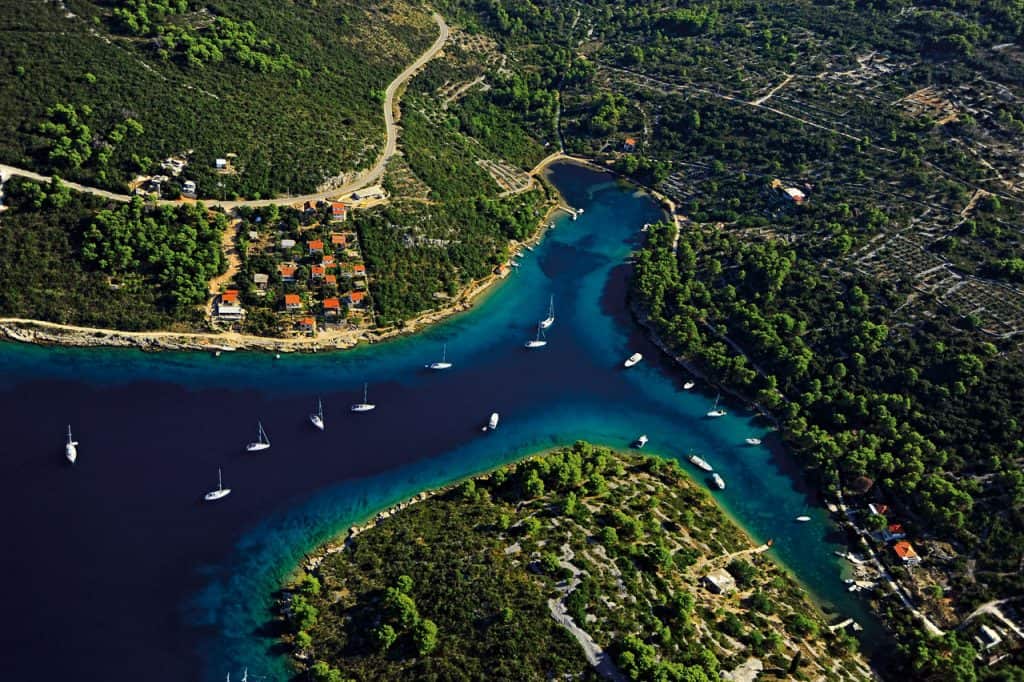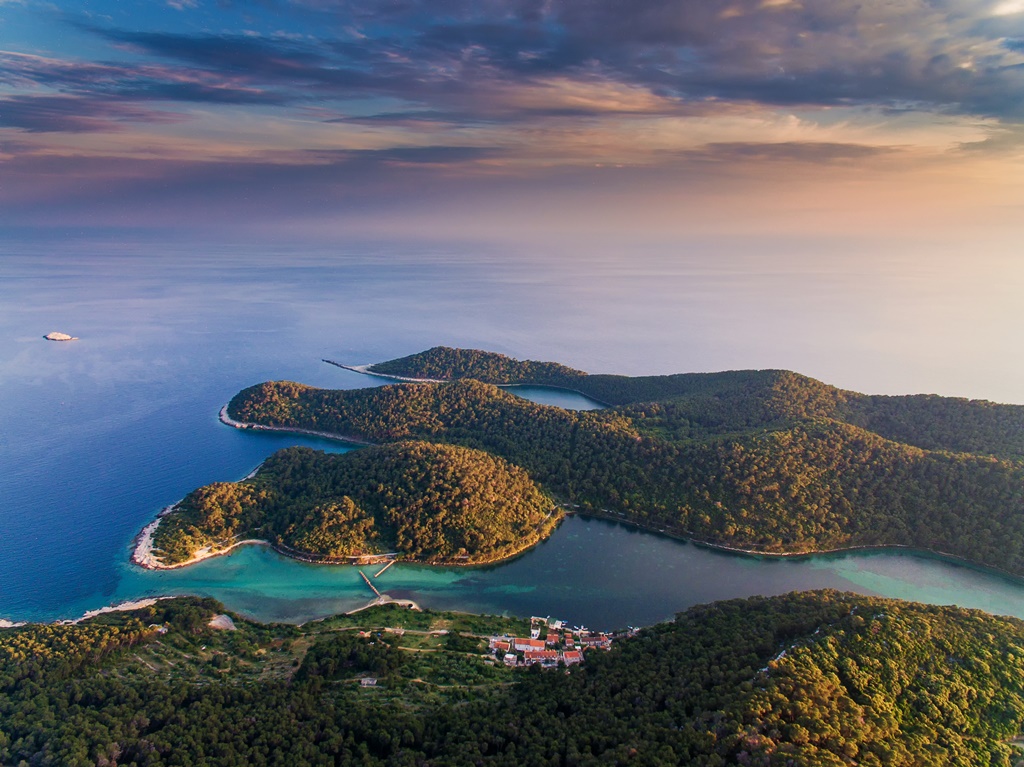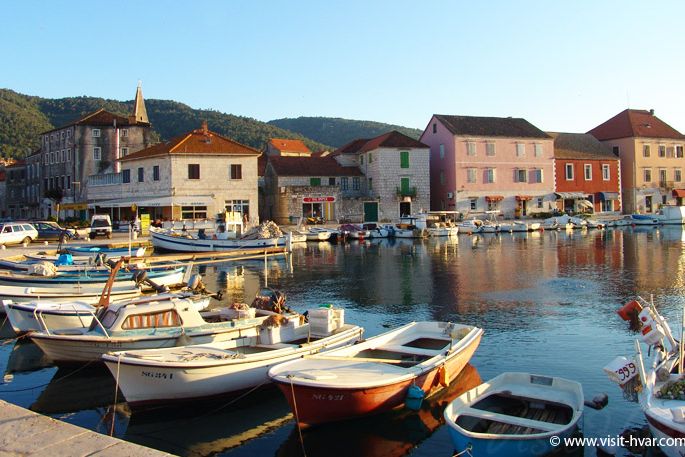16 Oct Split- Dubrovnik- Split (route for 2 weeks)
Day 1: Kaštela – Šolta
- The Island of Šolta is situated near Split, and, with only 9 nautical miles of distance and 8 ferry connections a day during the season between them, has become practically a suburb of Split.
- Šolta will undoubtedly be one of the must-see destinations on your nautical chart. Spend some time in the beautiful marina in Maslinica, find out why boaters are so fond of Stomorska or sail around the island and enjoy the beauty of its southern bays
Day 2: Šolta – Prvic
- Beautiful, quiet, old, noble, stealing breath in front of every house. Solid, stone, steep streets, stone houses, each capturing attention with its particularity, still forming a harmonious, single whole story. It is a story of glitter and wealth that used to be, and laughter that once resounded along these streets.
- Prvic, with its two settlements, Sepurine and Prvic Luka, was first mentioned in the 11th century. It was substantially inhabited by people from Srima and Vodice who fled here in fear of Turks. In the 16th century, the island became a fashionable resort for Sibenik nobility, building their villas and summer residences on it.
Day 3: Prvic – Skradin
Skradin is very special and unique and it wasn’t accidentally chosen by Bill Gates for his perfect holiday. Visiting picturesque city of Skradin is not where the story ends. It is actually where your gastronomic story begins. The story about Skradin risotto, Skradin delicacies, Skradin wine
Day 4: Skradin – Šibenik – Zlarin
- Šibenik, a gem in the Croatian Adriatic, is situated along the mouth of Krka on the most picturesque part of the eastern Adriatic coast. As the oldest Croatian autochtonous town it was first mentioned in 1066 during the reign of the Croatian King Kresimir IV.
The rich cultural and historical heritage of the city is visible in the impressive Cathedral of sv. Jakov [St. Jacob], built by the famous architect Juraj Dalmatinac and is under UNESCO protection. - Zlarin is a small island placed in the Dalmatian coast in Croatia, close to the city of Šibenik.
From this spot, Šibenik is very close to you. There are cypress forests, pine forests, rosemary forests, figs, olives and other Mediterranean plants. Internal parts of the island are uninhabited, covered with dense forests and underbrush. It’s called the green island with right
Day 5: Zlarin – Vis
Vis -the furthest island of the Central Dalmatian archipelago. It is especially well known for its cultural and historical heritage. Famous Greek writer Agatharchides praised wines from Vis as being the best he had ever tasted. Their most autochthonous wine is most certainly Vugava which you can try in numerous restaurants and cellars all around the island. Vis is also known as one of ‘the forbidden islands’ during the communist era. It was the centre of Yugoslav navy and therefore was forbidden to tourists. Even today there are many hidden tunnels all around the island that testify to that fact. Some of them are tourist attractions now and others are used by the Croatian navy. We’ll spend the night in one of numerous bays on Vis.
Day 6: Vis – Lastovo
- The sea around Lastovo is crystal clear, and because of its beauty attractive to many tourist. Every bay on the island is hidden underneath pine tries which are providing shadow in very hot summer days.
- Beaches on Lastovo are mainly rocky, natural ones with no interventions and devastation on nature. There is no doubt that every one can find its favorite place and the one thing we can promise you – a crystal clear sea.
Day 7: Lastovo – Mljet
Because of the same name in Roman and later in Latin scripts, Mljet was throughout history very often mistaken for Malta, and that is why today, two worldly known legends of Homer`s Ulysses` and St. Paul`s shipwrecks are set to more famous and bigger Malta. As a reminder that ancient Ogigia could have been on Mljet too, today you can find the Ulysses` Cave and St Paul`s Cliff, as well as a votive church on the east part of the island. We`re spending the night on Mljet (in Polača or Pomena, depending on weather conditions) where you can enjoy their extraordinary gastro offer. We especially recommend lobsters, which in restaurants on Mljet you can personally choose before the preparation.
Day 8: Mljet – Dubrovnik
Dubrovnik – the pearl of Adriatic. It is included in 10 most favourable and most beautiful tourist destinations in the world. It is one of the most important historical and tourist centres of Croatia which was included in UNESCO`s World Heritage List in 1979. The prosperity of the town was always based on maritime trade. In Middle Ages it was, under the name of the Dubrovnik Republic, the only city-state on the east Adriatic coast which could compete with the Venetian Republic. With its richness and diplomacy the city achieved an extraordinary level of development, especially during the 15th and the 16th century. Today it charms numerous tourists with its divine beauty and cultural monuments among which the most famous are: the town walls and fortresses, churches and palaces, Stradun (the main street)… Dubrovnik Summer Festival is the most important cultural event in Dubrovnik that takes place every year from 10th July to 25th August during which time you can see many music, theatre and dance performances all around the town.
Day 9: Dubrovnik – Šipan
Your next stop is the island of Šipan, one of the most famous Elafiti Islands, a small group of islands near Dubrovnik. Afternoon will be free for your own activities, whether it will be sightseeing, swimming or just lying in the sun with a good book and a cold drink. Although it`s only 16 sq.km big, Šipan is the biggest island in the group. It flourished during the Dubrovnik Republic, a period when the most important economy were shipbuilding, shipping, olive growing, fishing and wine growing. Today, on this small area, there are 42 old summer residences and 34 churches; proof that this oasis of peace and beauty was recognized as a place of relaxation by Dubrovniks’ high society.
Day 10: Šipan – Korčula
- You`re sailing to the island of Korčula, more precise the town of Korčula – the birthplace of a famous traveller-writer and adventurer Marco Polo.
- For the first time Korčula was mentioned in the 10th century in works of Byzantine historians under the name ‘Stone Town’. It flourished under the Venetian government. Today it`s a town where you can vividly feel the Mediterranean spirit of people who live and work in this mixture of Gothic, Renaissance and Baroque architecture.
Day 11: Korčula – Hvar
- After breakfast you continue your cruise for Pakleni otoci (‘The Hell Islands’). It is a group of small islands in front of the town of Hvar. It is a unique and the most recognizable natural beauty of the island of Hvar. In the afternoon or in the evening (depending on your preferences) transfer by dinghy will be organized for you to the town of Hvar.
- Hvar is a tourist, administrative and cultural centre of the island. It is worldly known for its wild night life and numerous elite bars, restaurants and hotels where many celebrities enjoyed themselves. But apart from that Hvar is also very well known for its rich cultural and historical heritage and it will leave breathless guests of all age. In one of beautiful Hvar bays we’ll spend the night.
Day 12: Hvar – Stari grad
- After breakfast you are continuing your crusing to town Stari Grad which is located also on island Hvar. But this town is place for ‘’must to see’’ for following reasons:
- Stari Grad(Pharos) is the oldest town in Croatia. The same year – 384 b.c. when greek philoshoper Aristotel was born in Trakia, the greeks from the island of Paros in Agean sea have settled the town on the island of Hvar, and named it Pharos.
Stari Grad (eng. “old town”) is historical heart of the island of Hvar. The town is situated in a landscape where the blue of the deep bay touches the green of the wide an famous field of Pharos, with vineyards and olive-groves. The fields used to provide sustenance and the bay provided protection.
Today, both the fields and the bay add an attractive quality to the island, in which the modern vacation sights have become intertwined with the antiquities of the town and of the island.
Day 13: Stari grad – Brač – Marina Kaštela
- The island was probably named after a deer – brenthos in Illyrian, a cult animal of Illyrian tribes who inhabited the island. Greeks called it Elaphusa and Bretanide which derives from the world elaphos – deer. Findings in the Kopačina cave are the evidence of the presence of deer on Brač in the prehistoric period. Roman historian Polybius called it Bretia, Pliny the Elder Brattia whilst in the Antinoe itinerary from the 4th century it is mentioned as Bractia.
- Zlatni rat, Vidova gora, Blaca desert, deep inlets, olive-groves, vineyards, pine wood along the crystal clear sea are images that numerous visitors bring home from the island of Brač.
















No Comments